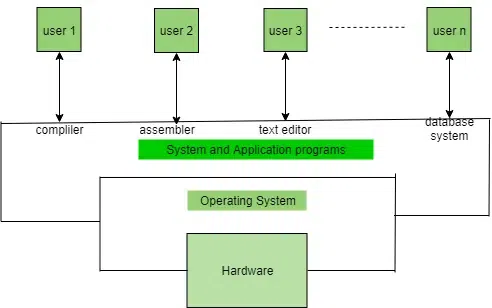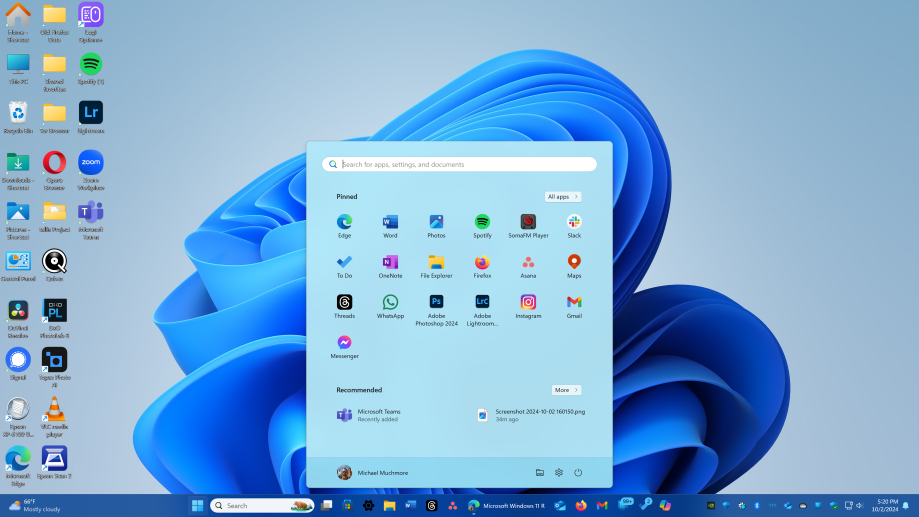Introduction to Understanding Operating Systems

Every electrical device we use today, including desktop computers, tablets, mobile phones, and laptops, needs an operating system to function properly. An operating system is the primary software component that manages all hardware and software actions of a device. It allows people to interact with their PCs or mobile devices without needing to employ intricate programming languages or system commands. Utilizing a computer would be practically impossible without an operating system. The definition, operation, and importance of an operating system in modern technology will all be covered in this article.
What Is an Operating System?

An operating system is a software application that provides services for computer programs and controls the hardware and software resources of computers. It serves as a bridge connecting users and computer hardware. A user cannot indeed or easily interact with computer hardware directly without an operating system.
Microsoft Windows, Linux, Android, and iOS are a few well-known examples. Although each of these systems is made for a certain kind of user or device, they all have the same basic goals.
What Is an Operating System?
An operating system is a software application that provides services for computer programs and controls the hardware and software resources of computers. It serves as a bridge connecting users and computer hardware. A user cannot indeed or easily interact with computer hardware directly without an operating system.
Microsoft Windows, Linux, Android, and iOS are a few well-known examples. Although each of these systems is made for a certain kind of user or device, they all have the same basic goals.
Core Functions of an Operating System
- Management of Processes
The operating system is in charge of managing a system’s processes. A program in action is called a process. The operating system allocates resources to processes, plans their execution, and makes sure they are carried out in a systematic manner.
- Memory Control
Memory is necessary for all running applications on a device to function. The operating system (OS) monitors every byte in a computer’s memory and controls memory space allocation and deallocation as needed.
- Management of File Systems
The OS controls the storage and retrieval of data. It makes it simple for users to read, write, edit, and remove files by organizing data into files and directories.
- Device Administration
The OS controls communication between the system and hardware, including external hard drives, printers, and keyboards. Device drivers serve as a mediator between the program and hardware.
- Control of Access and Security
By controlling user accounts, passwords, and permissions, operating systems offer rudimentary security. It guarantees that programs and data are shielded from unwanted access.
- Interface for Users
The graphical user interface (GUI) of the majority of operating systems enables users to interact with the system through visual components such as menus, windows, and icons.
Types of Operating Systems
Operating System for Batch
These systems do not communicate directly with computers. Jobs are entered into the system in batches after being prepared on punch cards. In the 1950s and 1960s, it was among the first OS versions to be utilized.
Operating System with Time Sharing
This makes it possible for several people to use the system at once by rapidly switching between them. One well-known example of this kind of system is UNIX.
Operating System Distribution
In this configuration, several computers share processing power and collaborate to complete tasks. This kind enables load balancing and resource sharing between systems.
Operating System in Real Time (RTOS)
These are employed in settings where time is of the essence. Robotics, embedded systems, and manufacturing are among the industries that depend on RTOS for accuracy and efficiency.
Operating System for Mobile Devices
Mobile operating systems, such as Android and iOS, are made especially for smartphones and tablets. They have a touch-based interface and are battery and wireless connectivity-optimized.
Why Operating Systems Matter
Using a computer would be a difficult and complicated process without an operating system, requiring an understanding of machine-level planning. Running software programs, organizing files, and connecting to the internet are all made easier by the operating system. alternatively, it guarantees effective use of hardware resources, allowing several jobs to function flawlessly on a single computer.
The appropriate operating system can impact security, achievement, and application compatibility from a business standpoint. It affects every aspect of your daily life with personal computers, including playing games, editing documents, and accessing the internet.
Choosing the Right Operating System
The operating system you choose will depend on your unique requirements:
- Windows and macOS provide general consumers with ease of use and compatibility with the majority of programs.
- Linux offers developers and tech enthusiasts versatility and freedom.
- Mobile consumers typically have to choose between iOS for security and ecosystem integration and Android for variety and customization.
Final Thoughts
The unsung heroes of contemporary technology are systems. They manage everything behind the scenes so we can concentrate on what really matters, making our interactions with digital gadgets smooth and effectiveHaving knowledge of operating systems allows you to appreciate the technology you use daily, regardless of your level of experience with it.

